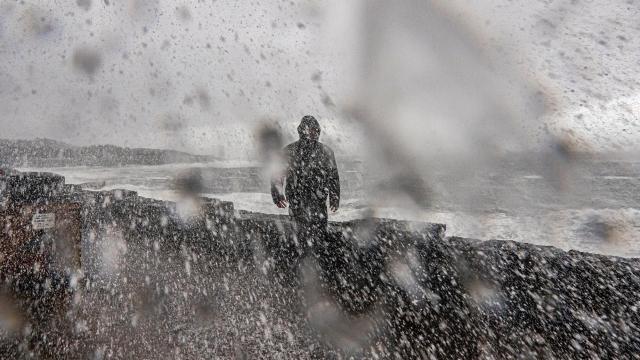A combination bomb cyclone and atmospheric river event has hit California and the rest of the West Coast. The system has brought punishing rain and wind to areas from the Bay Area to Seattle.
To say it marks a sea change in conditions would be an understatement. The West has gone from record drought to record rainfall in the blink of an eye. While potent, the storm is unlikely to solve the West’s water woes. And in fact, the drought means that parched soils and the numerous burn scars left behind by years of searing fires are unable to handle the deluge leading to intense runoff and mudslides.
Still, there’s likely to be some drought improvement in the coming weeks as a result of the storm. Homeowners, communities, and roadworkers may just have to sort out the damage first. This is California’s weather whiplash, in photos.
Roadways Are Closed Due to Debris Flows

Roadways have been closed due to various piles of debris. That includes portions of Highway 70, a major connector between California’s Central Valley and the Sierras that stretches nearly to the Nevada border. That stretch of highway runs through the heart of the Dixie Fire, California’s single largest fire ever recorded. The fire began in the middle of summer and evacuation orders were only lifted late last month. But what’s clear is that the impacts of the fire will live on long after the flames were quelled.
Slopes Are Unable to Handle This Much Water
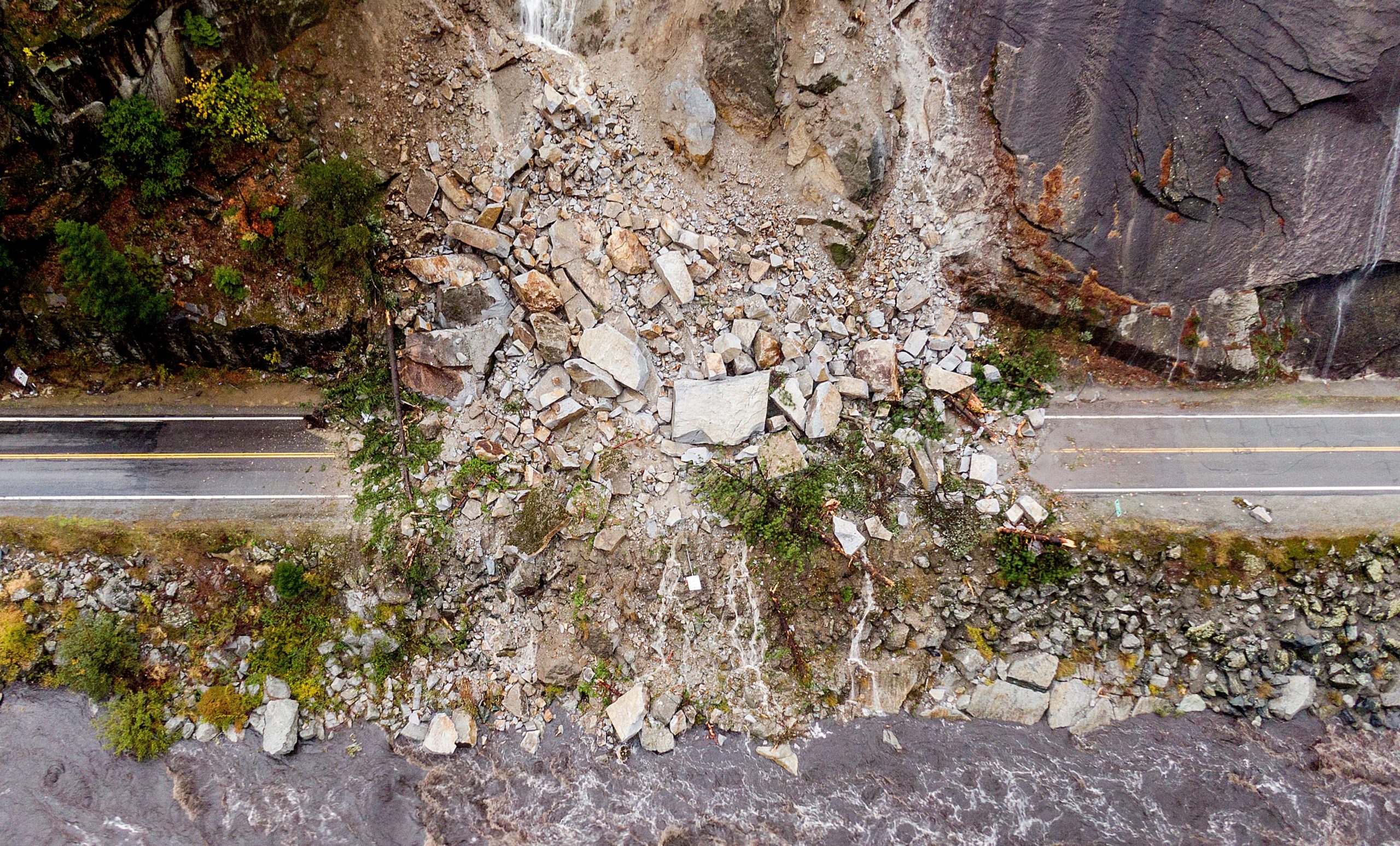
The rockslide that clogged the highway shows the acute risk of the burn scars left behind by the Dixie Fire and other blazes. The lack of vegetation means there are no roots or anything to hold soil in place and dead trees that can topple over and wreak havoc. A similar scene played out in Colorado this summer when Interstate 70 (no relation to California’s Highway 70) was damaged after freak thunderstorms unleashed debris from the Grizzly Creek Fire burn scar.
Lowland Flooding Is Also a Concern
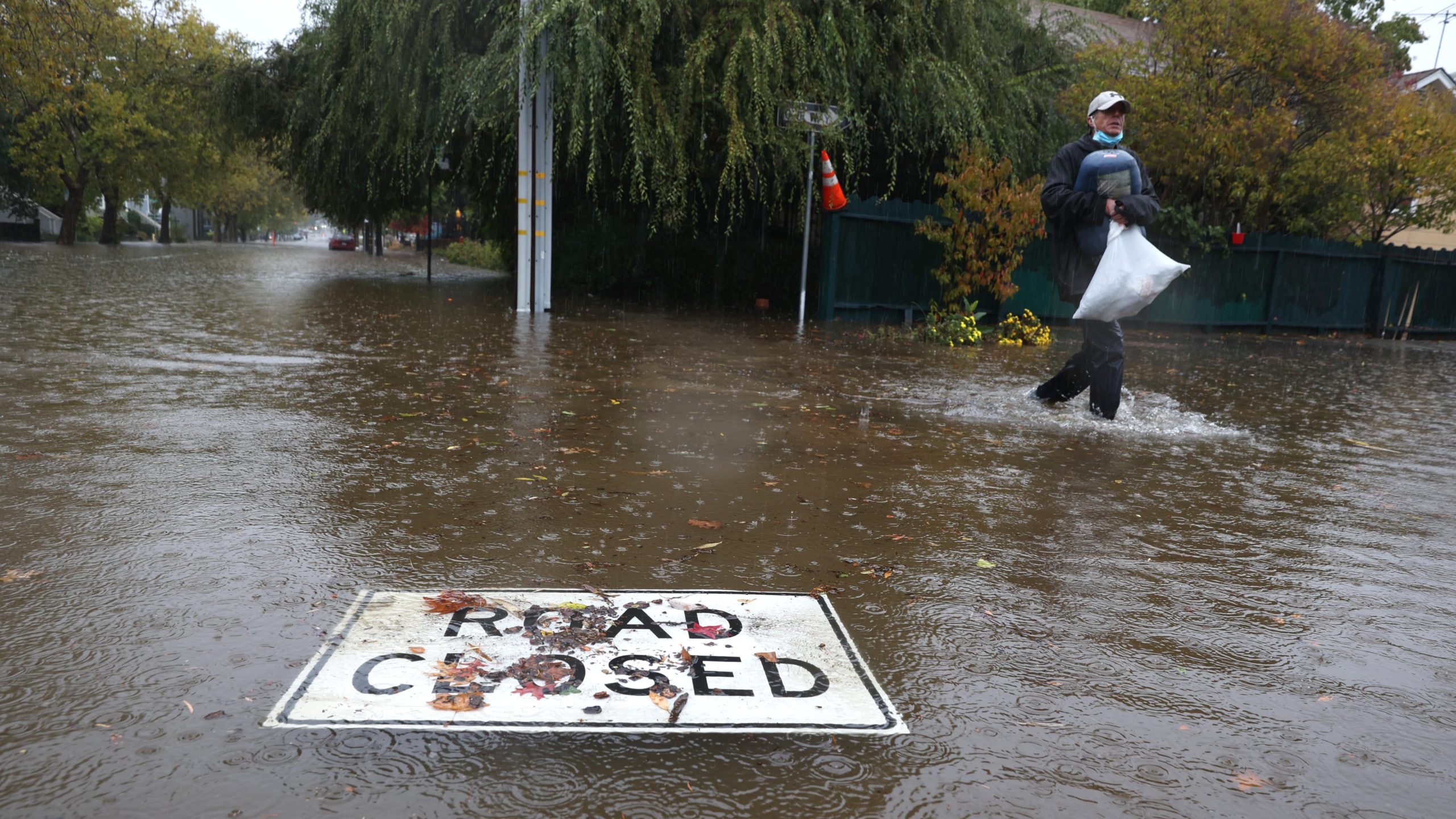
It’s hardly mountain roads that are susceptible to flooding. Areas in the North Bay also saw road closures that snarled traffic. Surface road closures continued into Monday morning.
Creeks Turned Into Raging Rivers
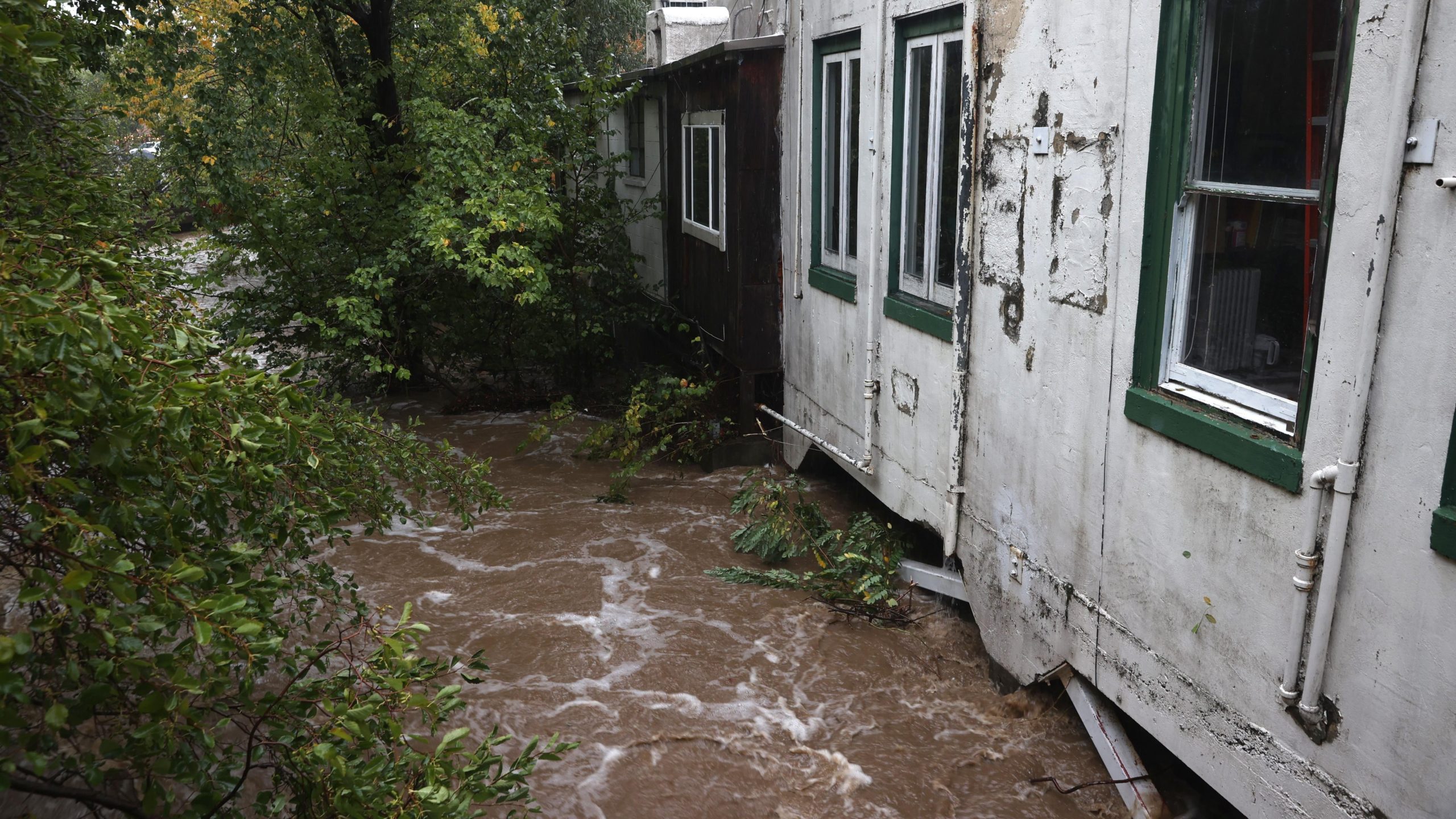
With so much rain and with soil’s inability to soak it up, waterways went from trickles to raging torrents in a very short period. Locations in the coastal mountains near Santa Cruz were among those evacuated due to the risk of debris flows. Thankfully for the area, though, no major flooding was reported.
Flooding Has Become a Theme This Year

Stop me if you’ve heard this before, but infrastructure failed to handle heavy rain. It’s become the story of the U.S. — and the world — this year as no-name rainstorm after no-name rainstorm has left infrastructure backed up.
This summer alone, rains left the New York metro area, Detroit, and Tennessee underwater in the U.S. Abroad, large swaths of Europe, India, and China were also blitzed by heavy rains.
These types of freak downpours are becoming disturbingly common in an overheating world, and the wide scope of damage shows that nowhere is immune. While this is technically the start of California’s wet season, the intensity of the rain that fell over the weekend was unheard of. Some locations set all-time daily rainfall records, including Sacramento, while numerous others set records for the month or day.
Too Much Rain Is Falling on Unprepared Infrastructure

The rain alone isn’t the problem. It’s what it falls on. In addition to parched soil, stormwater infrastructure is simply not positioned to handle the downpours of the 21st century. The American Society of Civil Engineers gives California’s stormwater infrastructure ranking a D+.
“Much of the drainage infrastructure in California was constructed prior to the 1940s and needs repair or replacement,” the group wrote in its annual report card.
Not exactly great news for what, if it were a country, would be the world’s fifth-largest economy. And even more nerve-wracking news when you consider what states and countries with fewer resources will go through as the planet gets hotter still.
California’s Drought Still Remains, Though
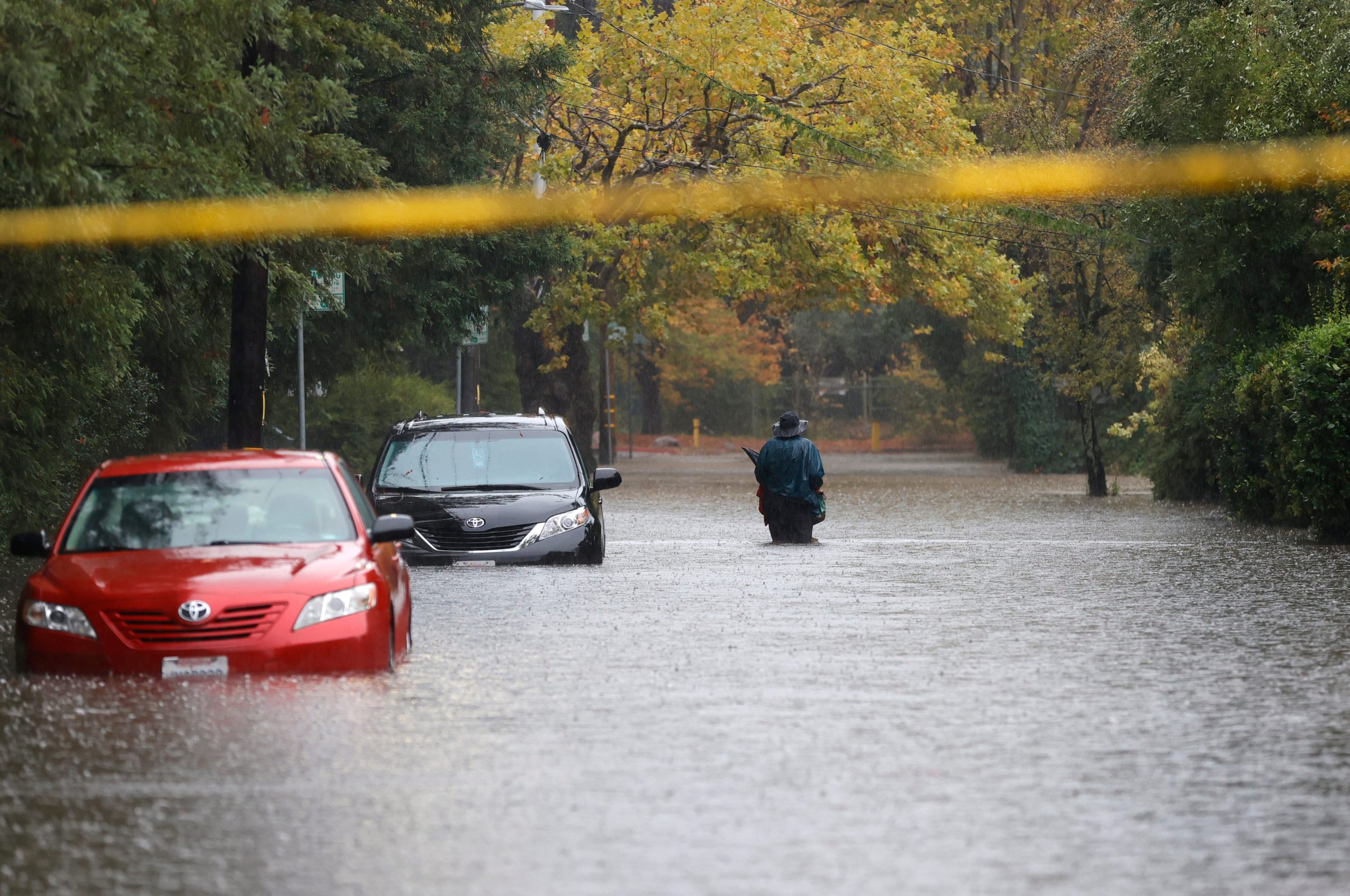
It may feel weird to look at a man standing on a flood street and read that drought still remains. Yet that’s exactly the situation the state finds itself in. The West has suffered through a megadrought unseen in at least 1,200 years. A Category 5 atmospheric river can make a dent, sure. But the region is still in an extreme precipitation deficit.
To give you a sense of the depth of the drought, consider this: Oroville Reservoir dropped so low this summer that it could no longer generate hydropower. This storm alone caused its height to jump by nearly 3.05 m (3 meters). Yet it remains nearly 100 feet (30 meters) below where it was at this time last year and 150 feet (46 meters) below where it was in 2019. Simply put, there’s a lot of ground, errr water, to make up.
This Is What Climate Change Looks Like
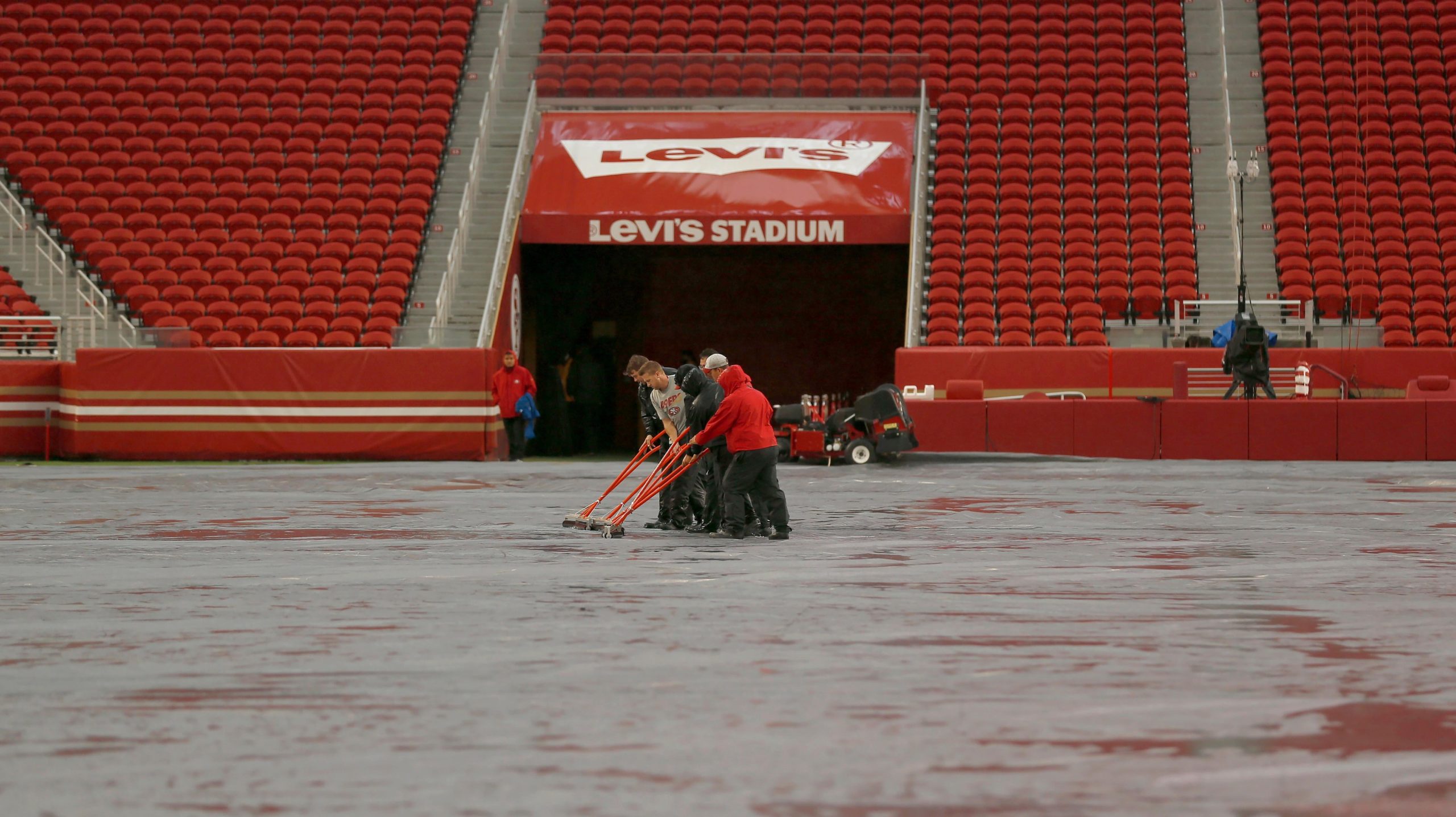
California’s average precipitation from year-to-year hasn’t changed much since record keeping began. But read between the lines and a new trend is emerging. Namely, California is prone to increasingly violent weather whiplash.
Research published in 2018 offered an all-too-prescient preview of what the Golden State faces. The findings show that “precipitation whiplash” will become the defining feature of California’s wet season in the coming decades as rain and snow become an all-or-nothing proposition. The research also shows that climate change is upping the odds of a winter like 1861-62, a period that saw Sacramento streets turn into canals. (No, seriously.)
The danger now, though, is that a flood event of that magnitude would affect more people and more infrastructure. The costs would be astronomical; the U.S. Geological Survey has modelled a scenario called ARkStorm (not my choice of capitalisation, but whatever) that shows a repeat would rack up $US725 ($967) billion in damage. This weekend’s floods, then, were just a proverbial drop in the bucket in more ways than one.
